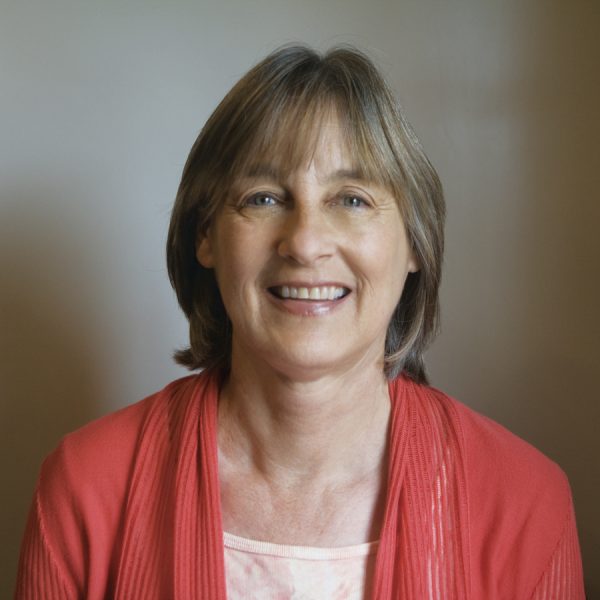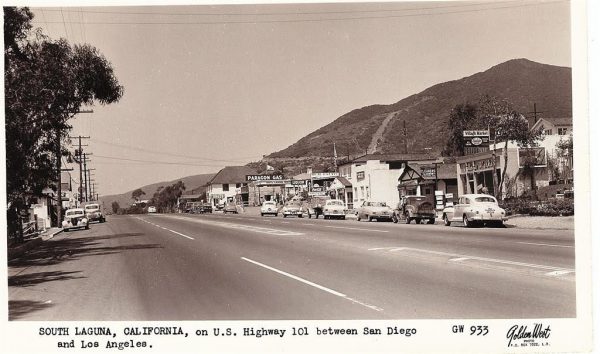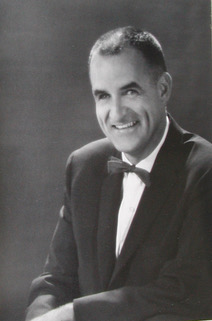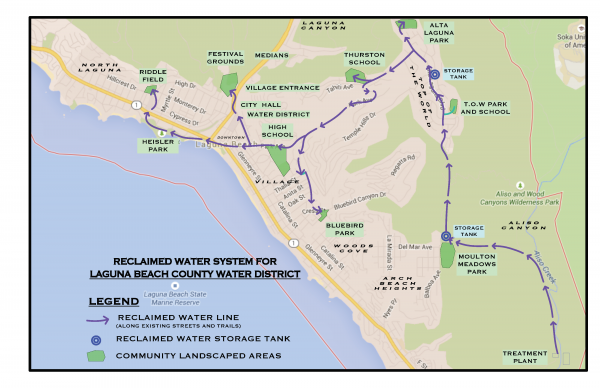Splashing Through Troubled Waters

Dr. Eric Evans began his medical practice in South Laguna in 1948. Evans’ office was in a former hotel, 31672 Coast Hwy., where Ocean Nails and Mimi’s Tailoring is now. Next door was an old-fashioned grocery store with black oiled floor and pickles in an open barrel. He describes a house of ill repute behind his office on Virginia Way, the post office in a very small old building facing that street, Tony Mancuso’s barbershop at 31711 Coast Hwy. and a Paragon gas station on the corner where the 7-11 is now.
Neighbor Walter Prill called him one night with a back problem. Evans arrived at his house furious, he had just walked through raw sewage flowing down Fifth Avenue. That’s when the doctor decided to run for the Sanitary District and put in a proper sewer system for South Laguna.
“When I started my practice there, everyone had cesspools about 10’ deep to take their sewage. Some of the cesspools were made of brick or concrete blocks, but some were made of redwood. The redwood would rot and one side of the cesspool would collapse, reducing its capacity, or just making it not work at all.” The lots in the village area were much too small to accommodate a septic system. The soils conditions weren’t suitable either—there is a top layer of porous material, but below that is the San Onofre breccia—a concrete-like rock formation. So even if the cesspools worked, the polluted water would percolate down to the breccia and flow underground toward the ocean. Prill said that the water seeping out of the cliffs was so voluminous at times that it caused great amounts of the rock to break off. Some things about the good old days were not so good.

Evans ran for the Sanitary District with two friends, Louis Furman and Joe Roberts. They won, defeating two incumbents and filling one vacant seat.
At Evans’ first board meeting they were considering what kind of redwood cesspools to put in. Evans intervened, “Let’s drop the redwood cesspools. Let’s put in a sewer system.” The vote passed 3-2. They passed general obligation bonds and by 1954 South Laguna had its own sewer system, with the innovative sewer tunnel that allows sewage to flow by gravity within the cliffs from Three Arch Bay to Aliso Beach. This avoided lift stations with electric pumps that can fail and result in spills. The small treatment plant in Aliso Canyon had an outfall pipe extending into the ocean at Aliso Beach.

The independence of this simple system was short lived. In 1972, the Aliso Water Management Agency (AWMA) was created, joining inland water districts, South Laguna Sanitary District and the City of Laguna Beach to regionalize sewage treatment and extend the sewage outfall pipe off Aliso Beach.
South Lagunans protested joining this consortium, objecting to huge increases in sewage effluent being released in nearby waters. They pushed for inland agencies to use self-contained systems like Irvine’s that provide for disposal through irrigation of landscape areas with reclaimed water. However the view prevailed that effluent could just be released to the ocean without the expense of “reclaiming” it.
The formation of AWMA meant that Laguna Beach abandoned its sewage treatment plant near City Hall and the Festival. A considerable engineering problem was created because the city’s sewage piping was designed to flow to the downtown treatment plant. In order to take sewage south to Aliso Canyon the city built numerous lift stations and the north coast interceptor pipe, completed in 1987.
There are 25 lift stations in the city’s system—each one a potential source of sewage spills if equipment fails. Valves on the north coast interceptor can also break as one did on Thanksgiving 2019. Thus we have the threat of unanticipated sewage spills and the daily ocean pollution from the Aliso sewage outfall pipe releasing 8-20 million gallons per day.
Are we at a parallel moment to Dr. Evans’ splashing through raw sewage on 5th Avenue in the early 1950s? The Thanksgiving accidental release of millions of gallons of untreated sewage is more shocking. The good new days are not so good either.
Not only should we take more preventive steps to keep accidental spills from happening, we need to stop using the ocean as our fall back disposal site. Even though our treatment plant does produce reclaimed water for irrigation, none is being used north of Nyes Place for lack of a distribution system. The city should be using reclaimed water for irrigation and improve treatment at the Aliso Canyon plant so that more is available for re-use. Inland districts should recycle water in their own communities. Less and less should be released in the ocean every year, until the effluent outflow is zero. Let’s make sure it really happens.

Ann is a landscape architect and former Laguna Beach mayor.




